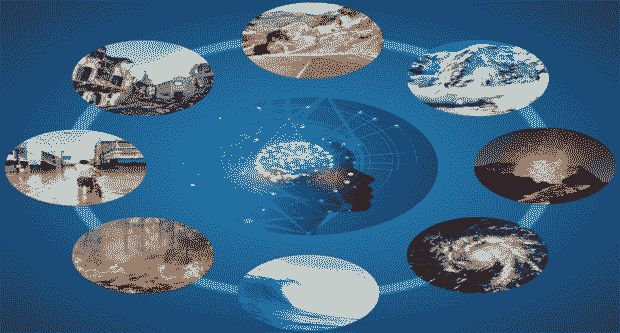Question: How can we use AI to predict and mitigate natural disasters?
Natural disasters such as earthquakes, hurricanes, floods, and wildfires pose significant threats to human lives, infrastructure, and economies. Traditional methods of predicting and mitigating these disasters often fall short due to their inherent unpredictability and the complex interplay of environmental factors. However, advances in artificial intelligence (AI) and machine learning (ML) are revolutionizing disaster management. This article explores how AI and ML are being used to predict natural disasters and develop strategies for mitigating their impact.
Predicting Natural Disasters with AI
Earthquakes
Predicting earthquakes has been a longstanding challenge for scientists. Traditional methods rely on seismographic data and geological studies, but these approaches have limitations in accuracy and timeliness. AI and ML offer new possibilities by analyzing vast amounts of data from various sources, including seismic activity, geological formations, and even animal behavior.
- Seismic Data Analysis: AI algorithms can process seismic data in real-time, identifying patterns that may indicate an impending earthquake. Machine learning models trained on historical earthquake data can predict the likelihood of future events based on current seismic activity.
- Deep Learning: Deep learning techniques, such as neural networks, can analyze complex datasets that traditional methods might overlook. For example, researchers have developed models that analyze satellite imagery and GPS data to detect subtle ground deformations that precede earthquakes.
Hurricanes
Hurricanes are among the most devastating natural disasters, causing widespread damage and loss of life. Accurate prediction of hurricane paths and intensities is crucial for effective disaster preparedness and response. AI and ML enhance traditional meteorological models by incorporating additional data sources and improving prediction accuracy.
- Weather Data Integration: AI models can integrate data from satellites, weather stations, and ocean buoys to provide a comprehensive view of atmospheric conditions. This holistic approach allows for more accurate predictions of hurricane formation, track, and intensity.
- Pattern Recognition: Machine learning algorithms can identify patterns in historical hurricane data, helping to predict future storm behavior. For instance, AI can analyze sea surface temperatures, wind patterns, and humidity levels to forecast the likelihood of hurricane development and its potential trajectory.
Floods
Floods are a common and destructive natural disaster, often resulting from heavy rainfall, river overflow, or storm surges. Predicting floods requires analyzing vast amounts of hydrological and meteorological data. AI and ML can improve flood prediction models by processing real-time data and identifying early warning signs.
- Hydrological Modeling: AI can enhance traditional hydrological models by incorporating real-time data from sensors placed in rivers and reservoirs. Machine learning algorithms can predict river levels and flood risks based on precipitation patterns and soil moisture levels.
- Satellite Imagery: AI-powered analysis of satellite imagery can detect changes in land surface conditions that indicate potential flooding. This includes monitoring vegetation, soil saturation, and water levels in flood-prone areas.
Wildfires
Wildfires are becoming more frequent and severe due to climate change. Predicting and mitigating wildfires involves analyzing environmental conditions and human activities. AI and ML can provide early warnings and optimize firefighting strategies.
- Environmental Monitoring: AI algorithms can analyze data from weather stations, satellites, and remote sensors to monitor conditions conducive to wildfires, such as temperature, humidity, and wind speed. This allows for early detection and risk assessment.
- Fire Behavior Prediction: Machine learning models can simulate fire behavior based on various factors, including fuel type, topography, and weather conditions. This helps in predicting fire spread and developing effective firefighting strategies.
Mitigating the Impact of Natural Disasters with AI
Early Warning Systems
AI-powered early warning systems can provide timely alerts for natural disasters, allowing authorities and communities to take preventive measures. These systems analyze real-time data and send notifications through various channels, including mobile apps, social media, and public announcement systems.
- Customized Alerts: AI can tailor alerts based on the specific needs of different regions and populations. For example, in the event of a tsunami, AI can predict the areas most likely to be affected and provide targeted warnings to residents and emergency responders.
- False Alarm Reduction: Machine learning algorithms can reduce false alarms by distinguishing between real threats and harmless anomalies. This improves the reliability of early warning systems and builds public trust in disaster preparedness efforts.
Resource Allocation
Effective disaster response requires efficient allocation of resources, such as personnel, equipment, and supplies. AI can optimize resource allocation by analyzing data on disaster impact, response capacity, and logistical constraints.
- Demand Forecasting: AI models can predict the demand for resources based on the severity and location of a disaster. This helps in pre-positioning supplies and deploying response teams to areas where they are most needed.
- Logistics Optimization: AI algorithms can optimize supply chain logistics, ensuring that aid reaches affected areas quickly and efficiently. This includes route planning, inventory management, and coordination with local authorities.
Damage Assessment
After a natural disaster, rapid and accurate damage assessment is crucial for effective recovery and rebuilding. AI-powered tools can analyze satellite imagery, drone footage, and ground reports to assess the extent of damage and prioritize recovery efforts.
- Image Analysis: AI algorithms can process satellite and drone images to identify damaged buildings, roads, and infrastructure. This allows for quick assessment of affected areas and aids in planning recovery operations.
- Impact Prediction: Machine learning models can predict the long-term impact of a disaster on communities, including economic losses, displacement, and health risks. This helps in designing comprehensive recovery plans that address both immediate and long-term needs.
Community Resilience
Building resilient communities involves educating residents about disaster risks and empowering them to take preventive measures. AI can support community resilience through predictive analytics, risk communication, and capacity building.
- Risk Mapping: AI-powered risk maps can highlight areas prone to natural disasters, enabling communities to plan and implement mitigation measures. This includes identifying safe zones, evacuation routes, and emergency shelters.
- Public Awareness: AI-driven platforms can disseminate information about disaster risks and preparedness measures. This includes interactive tools, educational content, and real-time updates that engage and inform the public.
Ethical Considerations
While AI and ML offer significant benefits in disaster prediction and mitigation, their use also raises ethical considerations. These include data privacy, algorithmic bias, and equitable access to technology.
- Data Privacy: The use of AI in disaster management involves collecting and analyzing large amounts of data, including personal information. Ensuring data privacy and security is crucial to protect individuals’ rights and build public trust.
- Algorithmic Bias: AI models can inherit biases from the data they are trained on, leading to unequal treatment of different populations. Addressing algorithmic bias is essential to ensure fair and effective disaster management.
- Equitable Access: Access to AI-powered disaster management tools should be equitable, ensuring that all communities, especially vulnerable and marginalized groups, benefit from these advancements.
Conclusion
Artificial intelligence and machine learning are transforming the way we predict and mitigate natural disasters. By harnessing the power of AI, we can improve the accuracy of disaster predictions, optimize resource allocation, and enhance community resilience. However, it is crucial to address the ethical considerations associated with AI to ensure that these technologies are used responsibly and equitably. As AI continues to evolve, it holds the promise of making our world safer and more resilient in the face of natural disasters.



